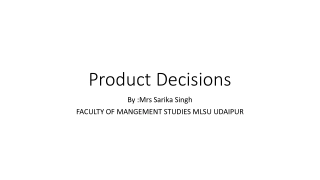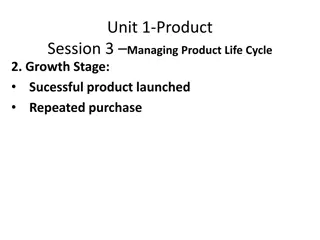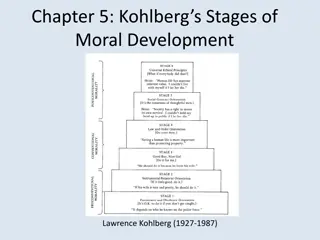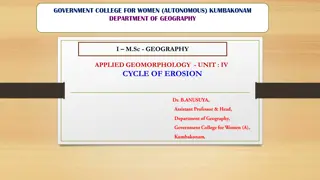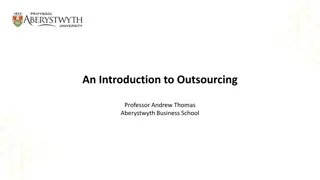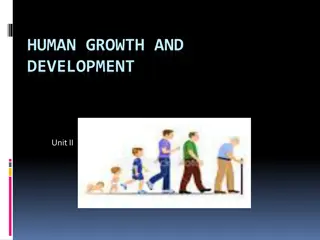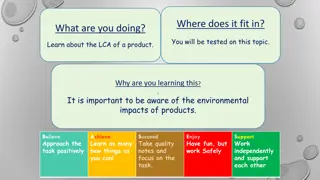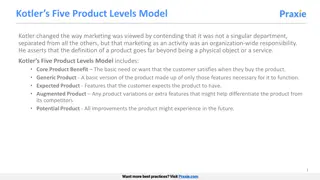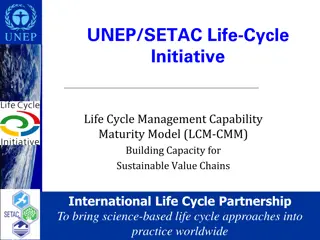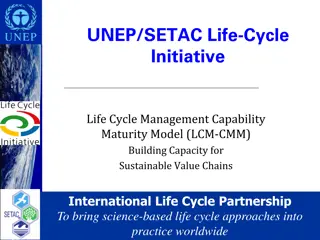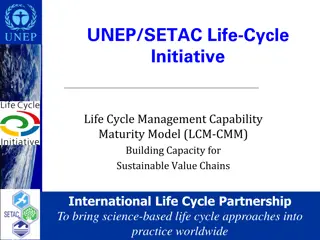Product Life Cycle Stages and Examples
The product life cycle consists of stages - Introduction, Growth, Maturity, Saturation, and Decline. In the Introduction stage, products are newly launched with low sales. Growth stage sees increasing sales due to successful marketing efforts. Maturity stage reflects stable sales with focus on competitiveness. Saturation stage indicates sales leveling off, requiring strategies like product portfolio expansion. Decline stage occurs when demand decreases, prompting businesses to consider reinvention or replacement.
Download Presentation

Please find below an Image/Link to download the presentation.
The content on the website is provided AS IS for your information and personal use only. It may not be sold, licensed, or shared on other websites without obtaining consent from the author. Download presentation by click this link. If you encounter any issues during the download, it is possible that the publisher has removed the file from their server.
E N D
Presentation Transcript
Product life cycle JUNIOR CYCLE
Product life cycle Product life cycle sales SATURATION MATURITY GROWTH DECLINE Introduction Time
1. Introduction Stage Product is launched into the market. There is low consumer awareness and low sales revenue. The business should focus on marketing to increase awareness of product, business and brand, sales promotion strategies to increase sales Sales are low at this stage and businesses often spend a large amount on designing and promoting their product at this stage through advertising, sales promotions etc In groups, what products can you think of that are at this stage?
2. Growth In groups, what products can you think of that are at this stage? Stage if marketing and distribution efforts are successful, sales should rise sharply during this phase. Once consumers tries the product the business seeks to benefit from repeat purchasing and increase market share. Persuasive advertising is often used at this stage
3. Maturity In groups, what products can you think of that are at this stage? Stage sales are still increasing but at a much slower rate. The product is well established in the market. Most sales are from repeat purchases at this stage instead of new customers. The business must focus on strategies to remain competitive such as reminder advertising, sales promotion etc. Businesses often adapt, modify and try to improve the product.
4. Saturation Stage - At this stage there is no room to expand the market for the product. Sales level off. The only way to increase sales is to take custom from its competitors. At this stage the business will focus on reminder advertising and promotional strategies. It will also look at increasing its product portfolio developing replacement products to takeover when the product enters into decline. In groups, what products can you think of that are at this stage? What are they doing? Creating new products? Improving there product etc?
5. Decline In groups, what products can you think of that are at this stage? Stage: at this stage, the product has outlived its demand. It can be gradual or rapid depending on the nature of the product. The business must decide whether to reinvent the product or replace it with another, expanding its product portfolio.
Draw the product life cycle and explain each stage in 2-3 lines.


